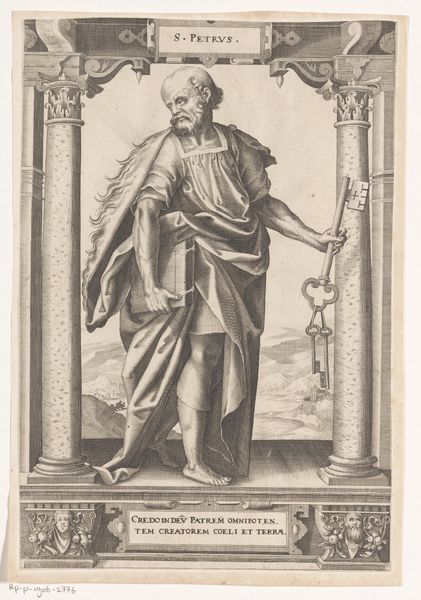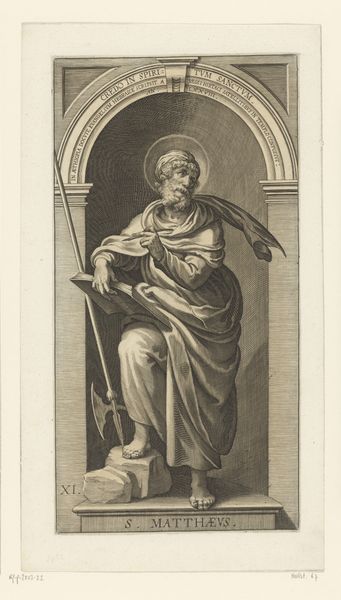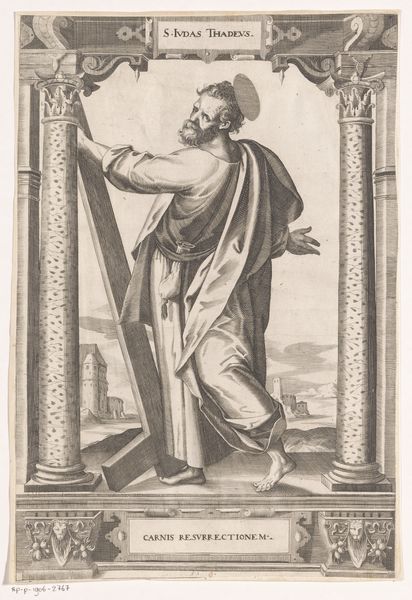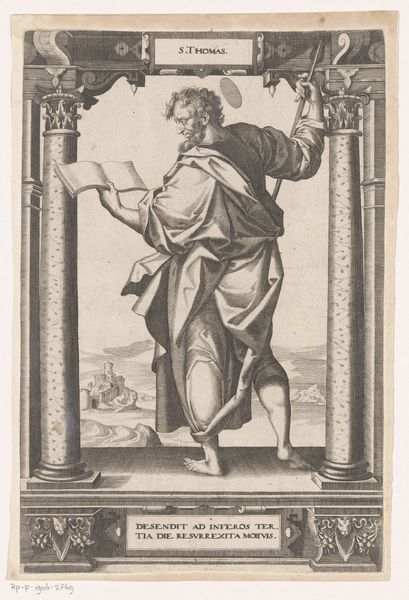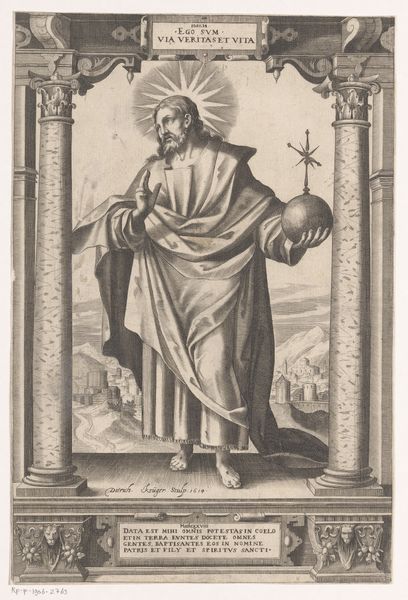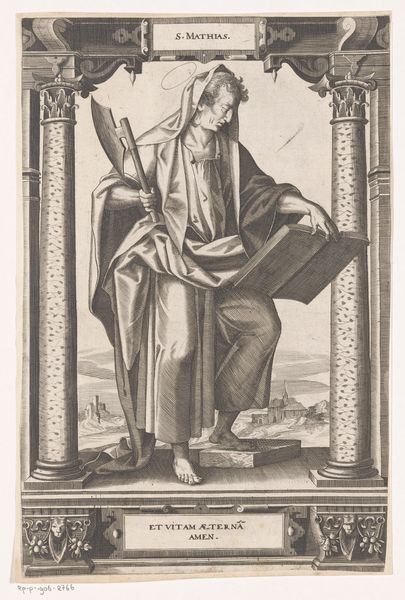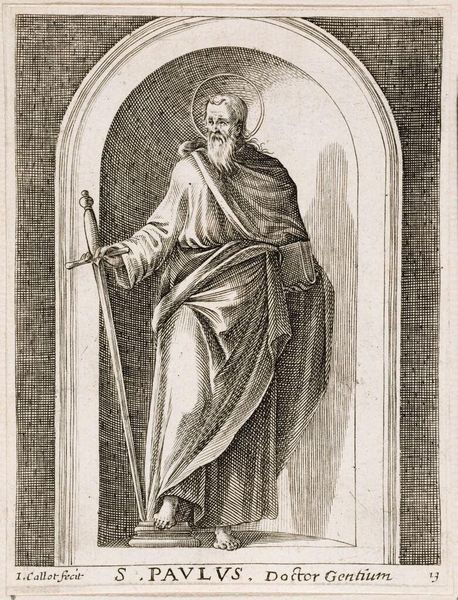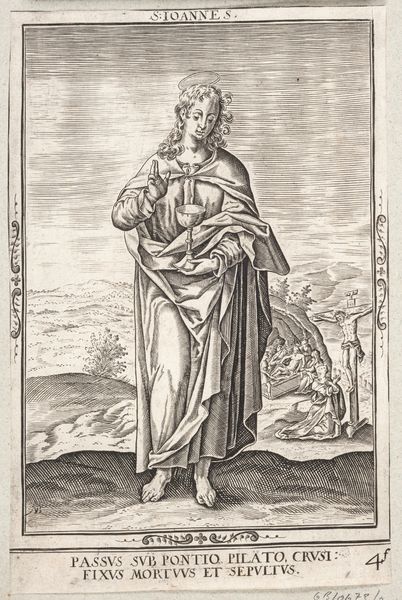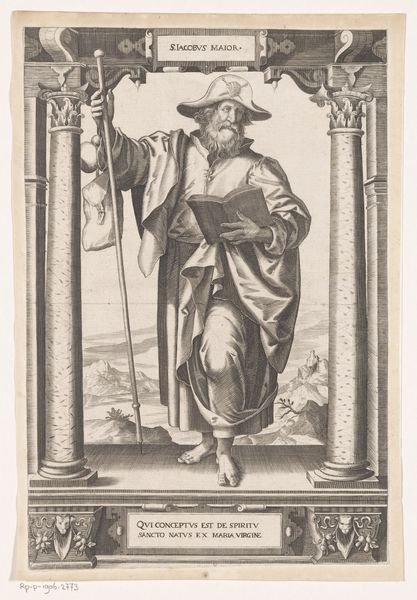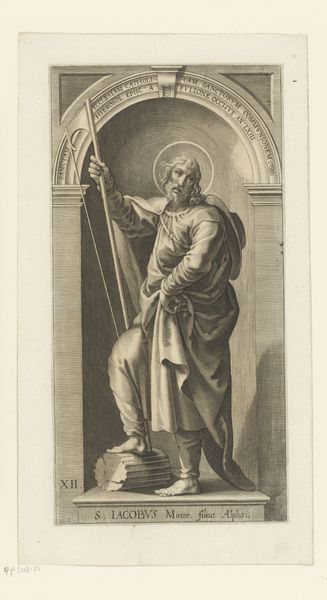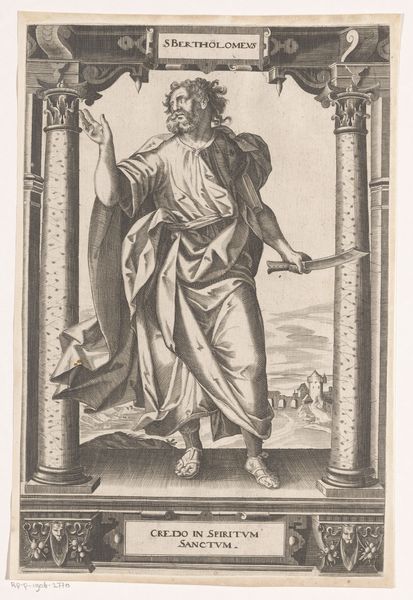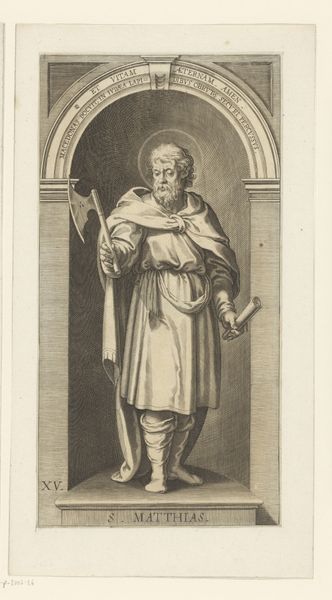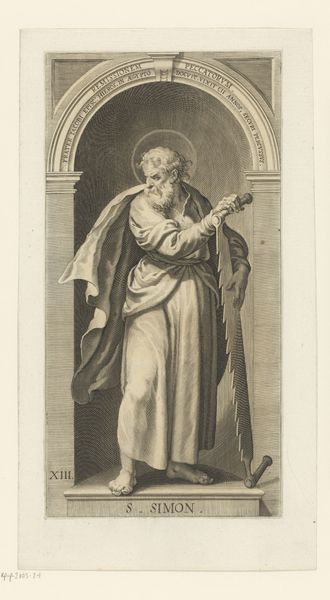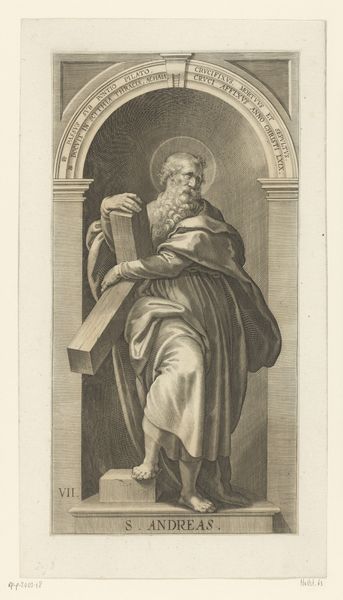
engraving
#
portrait
#
baroque
#
old engraving style
#
caricature
#
engraving
Dimensions: height 317 mm, width 213 mm
Copyright: Rijks Museum: Open Domain
Curator: Let's delve into this engraving of Saint Matthew, titled "Matteüs de apostel en evangelist", dating back to 1614, now housed in the Rijksmuseum. What strikes you initially about this piece? Editor: The most striking aspect is the textural contrast. The sharp, precise lines of the engraving create an almost sculptural effect, especially in the drapery and architectural frame, which juxtaposes surprisingly with the softness of the skin. It feels very...tactile. Curator: Absolutely. Considering its time, the engraving serves as an intriguing cultural artifact. It reflects the Baroque era’s focus on portraying religious figures with a certain grandeur and didacticism. The Latin inscription below – "Sanctam Ecclesiam Catholicam Sanctorum Communionem," reminds us of the central role the Catholic Church played in commissioning and disseminating such imagery. Editor: The artist certainly leverages the engraving medium to great effect here. The light, achieved through very subtle crosshatching, models the form meticulously. Take Matthew's face, for example; each tiny stroke builds towards a very naturalistic likeness. The architectural frame serves more than just a structural function—it truly enhances the visual reading. Curator: Precisely. We can analyze the placement of Matthew in a grand architectural setting. The pillar details echo Renaissance influences and reflect a reverence for classical knowledge within the church at that time. What is very telling, from a socio-historical point of view, is Matthew’s bare feet. We see an echo of social humility here—Matthew’s status of evangelist doesn’t remove him from his humanity. Editor: The bare feet, indeed. I almost missed the halo at first glance due to its subtlety, something else enhanced through texture of fine lines. And his holding of the book clearly establishes his scholarly role. The landscape behind him, dwarfed by the imposing architecture, subtly contrasts man’s earthly achievements and divine will. Curator: An important interpretation. Images like this circulated widely and served both devotional and propaganda purposes for the Church, solidifying its doctrines in a visually engaging format. Considering all of that, I am fascinated by its durability, which makes the message transcend to our time. Editor: Looking again closely at the engraving style and technique gives one much food for thought, as the image presents such refined lines, but with all this grandeur.
Comments
No comments
Be the first to comment and join the conversation on the ultimate creative platform.
